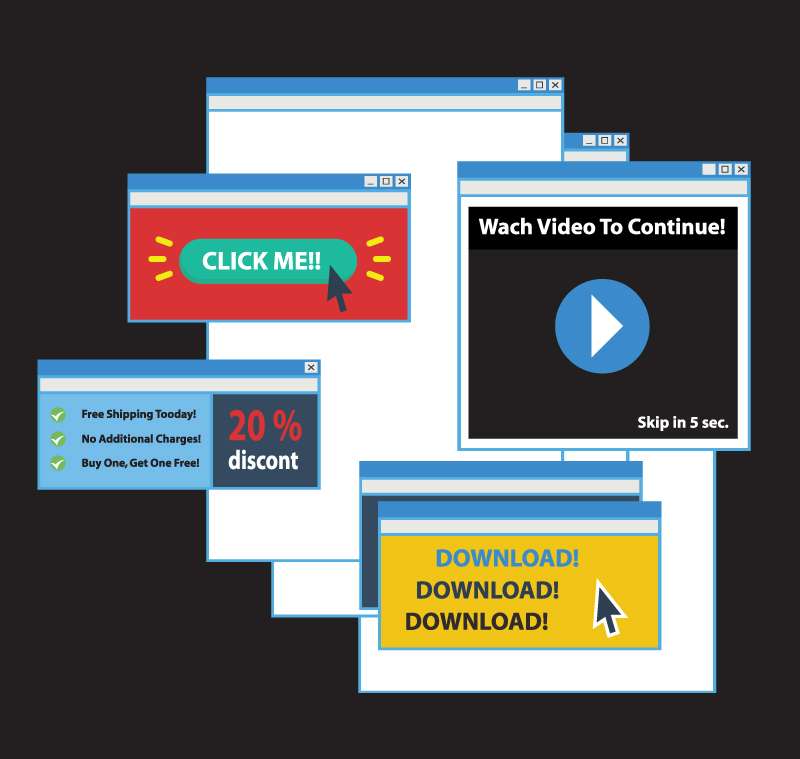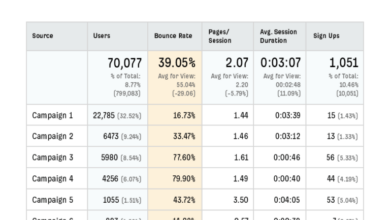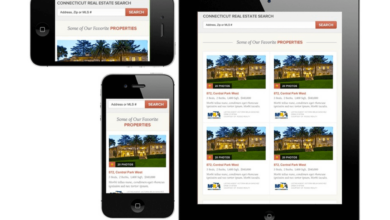
Should I Use Website Popups? A Deep Dive
Should I use website popups? This question plagues many website owners, as popups can be a powerful tool for conversions, but also a major deterrent to user experience. This in-depth exploration examines the effectiveness, user experience impact, legal considerations, A/B testing strategies, and even alternatives to popups, helping you decide if they’re right for your site. We’ll dive into the various types of popups, their pros and cons, and how to use them effectively without alienating your visitors.
From welcome mats to exit-intent popups, we’ll dissect the different types, analyzing their strengths and weaknesses. We’ll explore how to design popups that are both effective and user-friendly, avoiding the pitfalls of intrusive or poorly-designed implementations. Furthermore, legal and ethical considerations will be addressed, highlighting the importance of transparency and compliance.
Website Popup Effectiveness: Should I Use Website Popups
Pop-up windows on websites, while often perceived negatively, can be powerful tools for driving conversions and engagement if implemented strategically. Careful design and targeted messaging are key to maximizing their effectiveness without alienating users. This section delves into the nuances of different popup types, their impact on user experience, and strategies for optimization.Website popups, when implemented thoughtfully, can yield significant results.
However, poorly designed popups can negatively impact user experience and damage brand perception. This section focuses on best practices for effective popup usage, emphasizing factors like design, placement, and messaging.
Types of Website Popups
Understanding the various types of website popups is crucial for tailoring their effectiveness to specific goals. Different types of popups are designed to address various user interactions and behaviors. They can range from welcoming new visitors to capturing leads during checkout.
- Welcome Mats: These popups greet new visitors to the website, offering valuable information or incentives. Examples include welcome messages, introductory offers, or site tour options. They’re often used for onboarding and site navigation guidance.
- Exit-Intent Popups: These popups appear when a user is about to leave the website, aiming to retain them with a compelling offer or important message. They’re typically used for abandoned cart recovery, lead generation, and customer retention.
- Lead Capture Popups: Designed to collect user information, these popups often offer a discount, a free resource, or exclusive content in exchange for email addresses or contact details. These are critical for building an email list and nurturing potential customers.
Popup Design Considerations
Popup design directly impacts user experience and conversion rates. A well-designed popup can capture attention without being intrusive, while a poorly designed one can repel visitors.
- Minimalist vs. Flashy: Minimalist designs are often more effective, prioritizing clear messaging and a clean aesthetic. Flashy designs, while attention-grabbing, can be overwhelming and detract from the core message. The choice depends on the specific popup type and target audience.
- Optimal Placement: Placement significantly affects popup visibility and engagement. Strategic placement avoids obstructing crucial website elements while remaining visible and easily accessible. Avoid obscuring critical information on the page or placing popups over crucial content.
- Clear and Concise Messaging: Clear and concise messaging is essential. Popups should clearly communicate the value proposition and the next steps for the user. Avoid jargon or complex language; focus on straightforward language that directly addresses the user’s needs.
Effectiveness of Different Popup Triggers
Different triggers activate popups at various points in the user journey. Choosing the right trigger can significantly impact the popup’s effectiveness.
| Popup Type | Advantages | Disadvantages |
|---|---|---|
| Welcome Mat | Introduces visitors, provides site navigation, creates a positive first impression. | Can be intrusive if not well-designed, may be ignored by frequent visitors. |
| Exit-Intent | Captures attention of users about to leave, potentially recovers abandoned carts. | Can be perceived as aggressive, may annoy users if triggered too frequently or inappropriately. |
| Lead Capture | Collects valuable user data for marketing, nurtures leads, increases conversion rates. | Requires careful balancing of value exchange and user experience, may result in unsubscribes if offers are not valuable. |
User Experience and Popups
Popups, while seemingly a quick way to grab attention and drive conversions, can often have a detrimental effect on user experience if not implemented thoughtfully. A poorly designed popup can quickly turn a positive browsing experience into a frustrating one, leading users to abandon the site. This section delves into the impact of popups on user experience, examining both successful and unsuccessful implementations, and provides actionable strategies for creating popups that enhance, rather than hinder, the overall user journey.Effective popups are more than just a screen overlay; they are carefully crafted tools that serve the user’s needs while seamlessly integrating into the browsing experience.
This section explores the delicate balance between lead generation and maintaining a positive user experience.
Negative Impact of Excessive or Poorly Designed Popups
Excessive or poorly designed popups can significantly harm user experience. A barrage of popups, appearing unexpectedly, can disrupt the user’s flow, creating a sense of intrusion and frustration. This can lead to high bounce rates and a diminished perception of the website’s professionalism. Poorly designed popups, such as those with cluttered layouts, confusing calls to action, or excessive text, can be equally detrimental, hindering the user’s ability to understand the purpose of the popup and take desired action.
Examples of Successful and Unsuccessful Popup Implementations
A successful popup implementation, for instance, might be a strategically placed overlay offering a limited-time discount code. The popup is unobtrusive, visually appealing, and provides clear instructions on how to redeem the offer. Conversely, an unsuccessful example might be a popup that appears immediately upon landing on the page, demanding immediate attention with overwhelming text and a multitude of options.
This type of popup can significantly discourage users and lead to abandonment. The key difference lies in the understanding of user behavior and needs.
Designing Unobtrusive and User-Friendly Popups
To create user-friendly popups, prioritize simplicity and clarity. Use concise language, focus on a single, clear call to action, and ensure the popup is visually appealing and easily navigable. Employ clear and concise language to minimize cognitive load. The design should be visually appealing, yet not distracting, utilizing colors and fonts that complement the overall website design.
Implement clear calls to action, ideally one per popup, to ensure the user understands the next step.
Key Elements of a Good Popup
A good popup balances the need for information with user-friendliness. The design should be visually appealing, while the content should be concise and easily digestible. A clear and prominent call to action is crucial for guiding the user towards the desired outcome. In short, a good popup prioritizes the user experience while effectively achieving its objective.
Deciding whether to use website popups can be tricky. It’s a common tactic, but understanding how it fits into the broader strategies of creator economy marketing explained is key. For instance, if you’re building an audience and want to drive engagement, popups might be a useful tool within a well-rounded marketing approach. Ultimately, the question of whether or not to use website popups comes down to a deeper understanding of your overall marketing strategy and your specific goals.
creator economy marketing explained offers a more in-depth look at how to approach this.
Balancing Lead Generation and User Experience
Finding the right balance between lead generation and user experience is crucial. A well-designed popup can be an effective tool for capturing leads, while excessive or intrusive popups can significantly deter users. Prioritize user needs and ensure that the popup enhances the user experience rather than detracts from it. A user-centric approach should be paramount in the design and implementation process.
Table of Popup Implementations and User Experience Impact
| Popup Example | User Experience Impact |
|---|---|
| A popup offering a free ebook download after subscribing to a newsletter, appearing after 3 minutes of browsing | Positive. Provides value and respects user time. |
| A popup with a large image and multiple options appearing on page load | Negative. Disruptive and overwhelming. |
| A popup asking for user feedback, appearing after completing a purchase | Positive. Provides valuable insight and enhances the user journey. |
| A popup with a countdown timer and limited-time offer | Positive. Creates urgency and incentivizes action. |
Legal and Ethical Considerations
Website popups, while potentially effective for conversions, require careful consideration of legal and ethical implications. Navigating these considerations ensures a positive user experience and maintains a strong reputation for your business. Ignoring these aspects can lead to legal repercussions and damage user trust.Ethical and legal concerns surrounding website popups are paramount to responsible online practices. Transparency and user consent are crucial elements to building trust and adhering to legal requirements.
This section will delve into the specific legal and ethical guidelines surrounding website popups, providing actionable strategies to ensure compliance.
Relevant Legal Regulations
Many countries and regions have regulations concerning online interactions, including the use of popups. These regulations often focus on data privacy, informed consent, and transparency. A lack of clear disclosure about data collection practices or obtaining explicit consent can lead to significant legal challenges. Understanding the specific laws applicable to your target audience is essential for compliance.
General Data Protection Regulation (GDPR) in Europe and California Consumer Privacy Act (CCPA) are examples of regulations impacting popup usage.
Ethical Considerations
Beyond legal requirements, ethical considerations regarding popup use are critical. Transparency and honesty are paramount. For example, misleading users about the purpose of a popup or collecting data without explicit consent is unethical. Data privacy is a core concern. Users should understand how their data is being collected, used, and protected.
Using popups to pressure users into making a purchase or sharing personal information without clear justification is ethically questionable.
Importance of Transparent Communication
Clear and concise communication about popup usage is essential. Users should be aware of the purpose of the popup, how their data will be used, and their options. A clear and easily visible “Close” button, alongside a brief description of the popup’s function, is crucial. Users should not be surprised or feel misled by unexpected popups.
Compliance with Regulations
Implementing popups in compliance with legal regulations involves several key steps. First, thoroughly research the relevant regulations in your target market. Second, ensure your popup displays clear and concise information about its purpose and data collection practices. Third, obtain explicit consent from users before collecting personal data. Fourth, provide an easy and visible method for users to opt-out or close the popup.
Best Practices for Building Trust
Building trust is paramount when using popups. This involves avoiding deceptive tactics and emphasizing user benefits. Avoid popups that appear aggressively or are difficult to close. Offer clear value propositions, such as discounts or exclusive content, in exchange for user information. If you need user information, explain how you will use it and give them clear options to opt out or manage their data.
Avoiding Deceptive Tactics
Deceptive tactics, such as disguising a popup as a system message or hiding close buttons, are ethically problematic and often illegal. Transparency is key. Always clearly label popups as such and provide a clear mechanism for users to close them. Honesty and clear communication should be prioritized.
Summary of Legal and Ethical Guidelines
| Regulation | Description | Compliance Steps |
|---|---|---|
| GDPR (Europe) | Protects personal data; requires explicit consent. | Obtain explicit consent, provide data privacy policies, allow users to opt-out. |
| CCPA (California) | Provides California residents with control over their personal data. | Offer opt-out options, clearly disclose data collection practices, allow users to access and correct their data. |
| General Principles of Online Conduct | Transparency, honesty, and respect for user rights. | Use clear and concise language, offer visible close options, avoid misleading practices, and provide user control over data. |
A/B Testing and Optimization

A/B testing is crucial for optimizing website popups. By systematically comparing different variations, you can identify which designs yield the highest conversion rates. This iterative process allows you to fine-tune your popups, ensuring they effectively engage visitors and drive desired actions.
Deciding whether to use website popups can be tricky. Sometimes, they seem like a good way to capture leads, but they can also annoy visitors. Choosing the right small business social media packages how to pick one small business social media packages how to pick one can actually help you decide if popups are a good idea.
If you’re not properly engaging your audience with your social media presence, maybe a popup isn’t the best option, and a well-rounded social media strategy is key. Ultimately, the decision on popups depends on your overall strategy.
Importance of A/B Testing Popups
A/B testing website popups is essential for maximizing conversion rates. Different users respond differently to various design elements, copy, and offers. Testing allows you to understand what resonates most with your target audience, leading to more effective popups that convert visitors into customers or subscribers. Without testing, you risk using a design that is ineffective, wasting resources and missing opportunities for growth.
Different A/B Testing Methods for Popups, Should i use website popups
Various methods can be used for A/B testing popups. A common approach is to test different headline variations, call-to-action buttons, and image elements. You can also test the timing and placement of the popup on your website. A/B testing platforms offer tools to set up and manage these tests. Some platforms even allow you to test the entire popup flow, including the follow-up pages.
Analyzing A/B Test Results
Analyzing A/B test results requires a methodical approach. Focus on key metrics such as conversion rates, click-through rates, and time spent interacting with the popup. Statistical significance is vital when interpreting results; avoid making decisions based on small sample sizes. Tools within the A/B testing platforms often calculate statistical significance, providing clear insights into the effectiveness of each variation.
Interpreting the results in context with overall user behavior and website data is crucial.
A/B Test Parameters and Impact on Results
| Test Variable | Description | Expected Outcome |
|---|---|---|
| Headline | Different headline options for the popup | Higher click-through rates with compelling and clear headlines |
| Call-to-Action (CTA) button | Variations in the CTA button text, color, and style | Higher conversion rates with compelling and persuasive CTAs |
| Offer | Different offers (e.g., discounts, free trials) | Higher conversion rates with attractive and relevant offers |
| Popup Timing | Displaying the popup at different stages of the user journey (e.g., after a certain amount of time on the page) | Improved conversion rates based on optimal timing and user engagement |
| Popup Placement | Placement of the popup on different parts of the page | Increased visibility and interaction depending on the placement |
Setting Up an A/B Testing Framework
To establish a robust A/B testing framework for website popups, begin by clearly defining your goals. What specific action do you want users to take? Next, identify the key elements to test. This could include the headline, offer, CTA button, and popup placement. Choose a reputable A/B testing platform.
These platforms allow for easy creation and management of experiments, providing detailed reports. Use clear and concise metrics to measure success, ensuring a high level of accuracy. The framework should be continuous, regularly testing different elements to refine the popup for optimal performance.
Comparing Popup Copy Variations
Comparing popup copy variations is crucial for identifying the most effective approach. For example, a popup offering a 15% discount might perform better than one offering a free shipping promotion. Testing various language styles and tones can help refine the popup to resonate with the target audience. Consider incorporating personalization elements to tailor the message to specific user segments.
This personalized approach can improve engagement and conversion rates significantly. Real-life examples of successful popup campaigns often demonstrate the power of A/B testing in identifying high-performing copy.
Popup Strategies for Specific Goals

Popups, when used strategically, can be powerful tools for boosting conversions and driving engagement. However, poorly implemented popups can quickly alienate visitors and damage your website’s reputation. Understanding the specific goals you want to achieve with popups is crucial to their effectiveness. This section explores various popup strategies designed to achieve specific objectives, from promoting special offers to gathering customer feedback.Effective popup strategies are tailored to specific user behaviors and motivations.
This necessitates a deep understanding of your target audience and their interactions with your website. By using data-driven insights and careful planning, businesses can maximize the impact of popups while minimizing the negative consequences of intrusive or irrelevant messaging.
Abandoned Cart Popups
Abandoned cart popups are a proven method for recovering lost sales. These popups typically appear after a visitor leaves a product in their cart without completing the purchase. They offer incentives like discounts or free shipping to encourage them to return and finalize their purchase. An example could be a popup that appears after 24 hours, reminding the user of items left in their cart with a 15% discount offer if they return to complete their purchase.
This strategy can significantly increase conversion rates for items left in the cart. The design should be concise, highlighting the key information and the discount, with a clear call-to-action button.
Welcome Popups
Welcome popups can be used to introduce new visitors to your website and its offerings. These popups can offer a discount on their first purchase, provide valuable resources like ebooks or checklists, or highlight a new product launch. For instance, a welcome popup could offer a 10% discount on their first order, along with a link to a resource library filled with helpful tips and tricks.
This can establish a positive first impression and encourage immediate engagement. The popup should be unobtrusive, highlighting the value proposition clearly.
Deciding whether to use website popups can be tricky. Understanding your Key Performance Indicators (KPIs) is crucial for making the right call. For example, are you looking to boost lead generation or improve conversion rates? Knowing your specific KPIs, like those detailed in kpi key performance indicator marketing explained , will help you determine if popups are a good fit for your strategy.
Ultimately, the decision depends on how well popups align with your overall marketing goals and your website’s specific needs.
Customer Retention Popups
Popups can be used to nurture existing customers and encourage repeat purchases. For example, a popup can remind customers of their past purchases and offer related products or recommend complementary items. Another example could be a popup that appears periodically with exclusive discounts for returning customers. This personalized approach can strengthen customer relationships and drive repeat business. The popup design should feel like a friendly reminder, highlighting the value for the customer.
User Feedback Popups
Collecting user feedback is vital for understanding customer needs and improving your offerings. Popups can be designed to gather feedback through surveys or short questionnaires. A popup with a brief survey could ask customers about their recent experience, highlighting specific areas for improvement or appreciation. The design should be brief and focus on actionable feedback. Ensure the popup is not too intrusive and that the feedback mechanism is easy to navigate.
Call-to-Action Button Best Practices
Crafting effective call-to-action buttons is crucial for popup success. The button should be visually distinct, using contrasting colors and clear typography. Use action-oriented language in the button text, such as “Shop Now,” “Get Started,” or “Claim Your Discount.” A button design with a vibrant green color and the text “Get Your Free Guide” is more compelling than a gray button with the text “Click Here.” The button should be placed prominently within the popup.
Example: Product Promotion Popup
A popup promoting a new line of eco-friendly backpacks could feature a high-quality image of the backpack. The popup could highlight the backpack’s unique features, such as its water-resistant material and sustainable production. A prominent call-to-action button, like “Shop the Collection,” could lead customers directly to the product page. The popup should also include a brief description of the sustainable practices used in the production of the backpack.
The overall design should reflect the eco-friendly nature of the product, using earthy tones and imagery that aligns with the brand’s values.
Alternatives to Popups
Pop-up windows, while seemingly quick solutions for grabbing attention, often lead to a negative user experience. Users frequently perceive them as intrusive and disruptive, impacting the overall impression of a website. This can result in lower engagement and conversions. Exploring alternatives that seamlessly integrate with the site design can lead to improved user satisfaction and better results.Alternative methods, like strategically placed sidebars or unobtrusive banners, can achieve similar objectives without the jarring effect of pop-ups.
By carefully considering the user experience and aligning the alternative with the overall design aesthetic, businesses can improve engagement and encourage desired actions without sacrificing user comfort.
Reasons for Avoiding Popups
Pop-ups frequently interrupt the user’s flow, often leading to frustration. This disruption can cause users to abandon the site, impacting conversion rates and potentially damaging the brand image. The intrusive nature of pop-ups also contributes to a negative perception of the site, which can affect future interactions and word-of-mouth recommendations. Furthermore, pop-up blockers are common, rendering these methods ineffective for many users.
Alternative Methods and Successful Implementations
Implementing alternatives like sidebars or banners can achieve similar goals to pop-ups without the negative impact. Sidebars, positioned prominently on the side of a page, can display important information or calls to action without obstructing the primary content. They can be designed to subtly guide users towards key areas, like a signup form or promotional offer.
- Sidebars: A well-designed sidebar can effectively showcase products, services, or promotions. For instance, a clothing retailer could use a sidebar to highlight new arrivals or seasonal collections, subtly guiding users to specific product pages. The key is to avoid overwhelming the user with too much information. The sidebar should be easily navigable and visually appealing, not a wall of text.
- Banners: Strategic placement of banners can direct users to important information or offers. These banners can be used to promote limited-time discounts or highlight specific products. A banner on an electronics website, for example, could showcase a deal on a specific model, encouraging clicks and engagement without being overly intrusive. The success of banners depends heavily on their design and placement, ensuring they don’t detract from the primary content.
- In-Article Ads: These ads can be integrated seamlessly into the flow of the content, showcasing relevant products or services without disrupting the reading experience. A travel blog might integrate an ad for a travel agency in a relevant section of the article. The key is to ensure the ad is visually consistent with the surrounding content and doesn’t overwhelm the reader.
Benefits of Alternative Methods Over Popups
Alternative methods offer several advantages over pop-ups. They improve the overall user experience, reducing frustration and improving engagement. A seamless integration into the website design fosters a positive perception of the brand, potentially leading to higher conversion rates. The avoidance of pop-up blockers is another significant advantage, as these methods are less likely to be blocked by users’ browser settings.
Integrating Alternatives Seamlessly
Integrating these alternatives seamlessly into the user experience involves careful consideration of the overall website design. The design should prioritize user comfort and readability. Placement is crucial; sidebars should not block important content, and banners should be visually appealing without overwhelming the page. Using consistent branding throughout the site is important for a cohesive user experience. In-article ads should be relevant to the content, ensuring they provide value and don’t disrupt the user’s flow.
Testing and optimizing these alternative methods is crucial to ensure they achieve the desired goals.
Last Point
Ultimately, the decision of whether or not to use website popups comes down to careful consideration of your specific goals, target audience, and website design. We’ve explored the various factors to consider, from user experience to legal regulations. By understanding the nuances of popups and exploring alternative solutions, you can make an informed choice that maximizes conversions while respecting your users’ time and attention.
Remember, a well-designed popup can be a valuable tool, but a poorly executed one can be detrimental to your site’s success.





